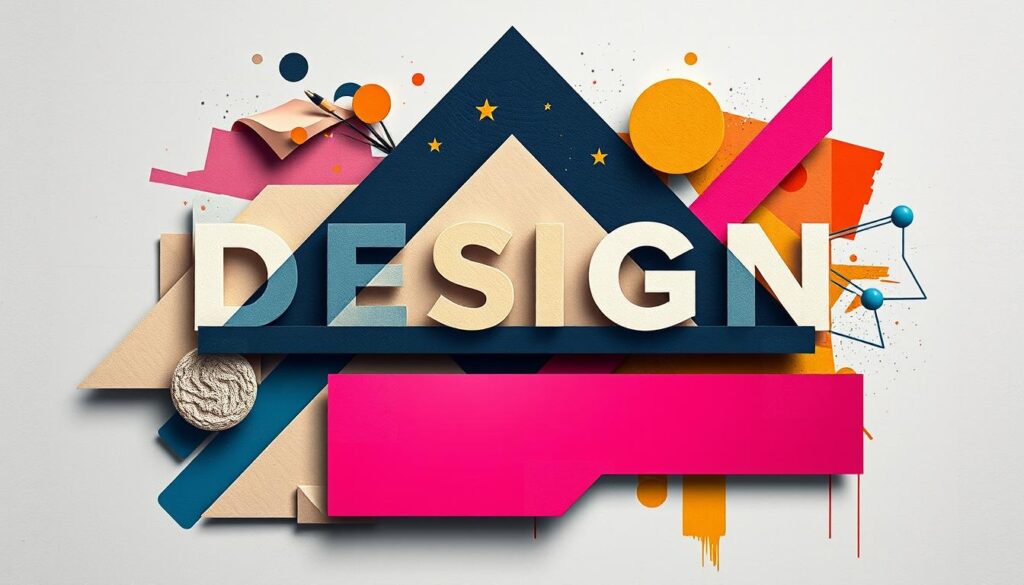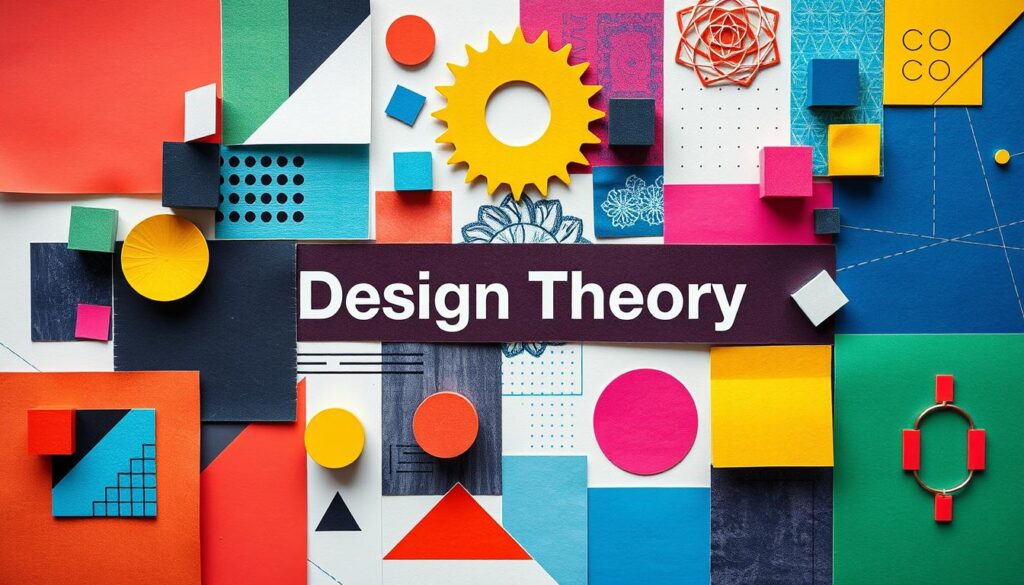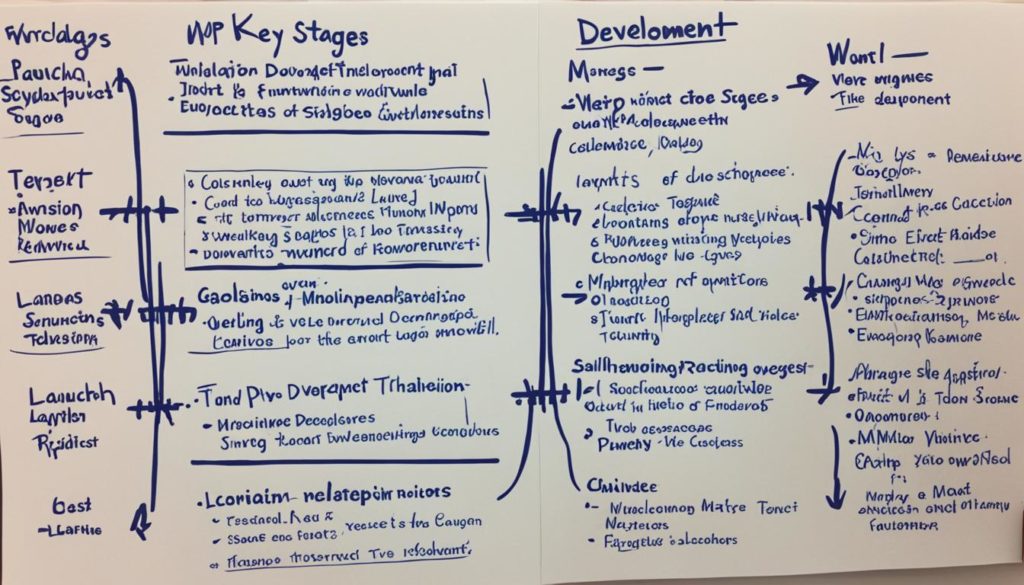
Did you know there are 7 to 12 key design principles in graphic design? These include balance, contrast, emphasis, movement, proportion/scale, repetition/rhythm, and unity/harmony. They are the foundation of all good visual designs. Knowing and using these principles is key for anyone wanting to improve their visual skills and succeed in creative projects.
Our exploration of essential graphic design principles starts with a simple fact. Designs are more than just pretty pictures. They follow rules that make them look good and work well together. Whether you learn through online classes or get one-on-one help, these principles are at the heart of your education. By learning about them, we gain the tools to handle the challenges of graphic design.
Key Takeaways
- Typically, there are around 7 to 12 key design principles recognized in graphic design.
- Core principles include balance, contrast, emphasis, movement, proportion/scale, repetition/rhythm, and unity/harmony.
- Applying these principles is crucial for creating cohesive and visually appealing designs.
- Understanding these principles enhances visual skills and boosts success in creative projects.
- Resources like virtual classes and personalized mentorship play a significant role in mastering these principles.
Introduction to Design Principles
Learning the principles of design is key for making things look good and work well together. These rules help both new and experienced designers. They offer tools to improve visual compositions in many areas, like digital screens and traditional art.
The main design essentials are line, shape, color, texture, and space. These are used with rules like unity and variety, balance, and emphasis. Each rule helps make a piece look cohesive and beautiful.
For example, visual balance is important for a clear look. There are three types: symmetrical, asymmetrical, and radial. Symmetrical balance looks like a mirror, while asymmetrical is more lively. Radial balance spreads out from a center, making things look more unified.
Textures have also changed a lot. Even though flat design was big in the mid-2010s, textures are still great for adding depth. Designers use both real and suggested textures, with screens preferring suggested ones because they can’t feel real textures.
Knowing and using these design essentials and rules is very helpful. For example, understanding color theory is crucial. It shows how different colors work in print versus digital. In short, design principles are a must for making art that stands out, is well-organized, and looks amazing.
Key Principles of Design
Learning about key design principles helps us make things look good and work well together. These rules are the base of good design. They make sure every part of the design fits together well and looks great.
Balance
Balance in design means spreading out the look of things in a picture. You can use symmetry, asymmetry, or radial balance to make things look stable and nice. By arranging things right, we make sure nothing stands out too much.
Contrast
Using visual contrast adds excitement and breaks up dullness. Mixing up colors, shapes, sizes, and textures makes a design lively. Contrast helps show off important parts and separates different areas in the design.
Emphasis
Design emphasis helps us focus on certain parts of a design. By making some parts stand out, we guide the viewer’s eye to what’s most important. We use size, color, and where things are placed to make this happen.
Repetition
Design repetition means using the same things over and over to create a sense of rhythm. This is key for making a design that people can recognize and feel connected to. It also helps make the design look more unified and easy to follow.
Proportion
Design proportion makes sure things are the right size compared to each other. When things are in proportion, the design looks better and feels more balanced. This makes the design look nice and feel right.
| Principle | Description | Example |
|---|---|---|
| Balance | Distribution of visual weight to achieve stability | Symmetrical layouts |
| Contrast | Differences between elements to enhance visual interest | Black and white color scheme |
| Emphasis | Creation of focal points to guide viewer’s attention | Bold headlines |
| Repetition | Consistent use of elements for rhythm and identity | Repeated patterns |
| Proportion | Relational scale between elements for harmony | Proportional typography |
Design Theory and Fundamentals
Understanding design theory is key for graphic design professionals. It includes several approaches that help explain and describe design. The main principles of layout and composition, like alignment and contrast, are crucial for good design.
Knowing the principles of layout helps designers create organized designs. For instance, alignment makes sure everything on a page looks connected. This leads to clean and structured designs.
The principles of composition make designs look balanced and coherent. There are three types of balance: symmetrical, asymmetrical, and discordant. Symmetrical balance is the most stable and pleasing.
Color theory shows how color can affect emotions and perceptions. Each color has its own meaning. Understanding these meanings can make designs more effective.
Design thinking starts by understanding the user. It involves defining problems, coming up with ideas, making prototypes, and testing them. This process helps create designs that connect with people.
Graphic elements like forms and lines add interest to designs. Elements like line work, patterns, textures, and type can make designs more engaging and guide the viewer’s attention.
Design theory also helps in finding creative solutions and solving problems. By using these theories, designers can make their work both beautiful and meaningful.
Principles of Design in Practice
Design principles are the basic rules for making designs look good. By applying design principles in real life, we improve both looks and function. This part talks about how to use these principles in everyday design work.
Case Studies
Looking at graphic design case studies shows us how designers use these rules. For example, in website redesigns, knowing about color, shape, and space is key. It helps make layouts balanced and interesting.
By checking out different projects, we learn how contrast makes important messages pop. We also see how repetition keeps things consistent across pages or screens.
| Design Principle | Description | Application in Real World |
|---|---|---|
| Balance | Distribution of visual weight | Ensures an even layout in magazine spreads |
| Contrast | Differences in color, texture, shape, size | Highlights elements in advertisements |
| Repetition | Consistency and unity through repeated elements | Used in branding to maintain a cohesive identity |
Tools and Techniques
Knowing how to use design tools and mastering design techniques is crucial. Tools like Adobe Creative Suite, Sketch, and Figma are essential for digital design. Techniques like grid systems help with symmetry and harmony, while color theory picks out nice color schemes.
Ignoring these design techniques can harm the final product. So, designers must keep up with new trends and tech.
Conclusion
Exploring the principles of design has been a journey of discovery. We’ve looked at key elements like balance, contrast, and emphasis. These are vital for designers who want to improve visual design.
We’ve seen how combining these principles can lead to amazing visual designs. This journey has covered a wide range of design insights.
Design principles like alignment and balance are crucial for a good look. Contrast helps make things stand out, and repetition builds a brand’s identity. These aren’t just ideas; they’re the heart of effective design.
Design principles combine elements to make visual works better. Whether for websites, apps, or other content, knowing these principles is key. It helps us create designs that look great and work well.
In the end, understanding design principles is essential. It leads to better visual design and successful projects. This knowledge is a powerful tool for any designer.
FAQ
What are the fundamental design principles?
The key design principles are balance, contrast, emphasis, repetition, and proportion. These rules help create designs that look good and work well. They apply to both digital designs and traditional art.
Why is understanding graphic design principles important?
Knowing graphic design principles is key. They help make designs that look good and work well. Designers use these principles to create projects that connect with their audience.
How does online learning benefit art education?
Online learning makes art education flexible. You can learn from home. It also offers personalized lessons for those who want specialized knowledge or one-on-one help.
Can the principles of layout and composition influence design outcomes?
Yes, they do! Layout and composition are vital for effective visual presentations. Designers use these principles to create designs that are balanced, impactful, and pleasing to the eye.
What is the role of balance in design composition?
Balance makes designs look stable and harmonious. It ensures elements are evenly distributed, creating a cohesive and structured look.
How does contrast enhance visual design?
Contrast adds interest and highlights differences in a design. It helps designers focus attention and make designs more engaging and dynamic.
Why is emphasis important in a design?
Emphasis guides the viewer’s eye to important parts of a design. It helps create a clear visual hierarchy, making sure key elements stand out.
What is the significance of repetition in design?
Repetition creates consistency and visual identity. It ensures elements are used consistently, helping to build brand recognition and reinforce the design’s message.
How does proportion affect design composition?
Proportion ensures elements are in the right scale, making the design cohesive and appealing. Proper proportions help all parts of the design work together in harmony.
How can case studies help understand design principles in practice?
Case studies show how design principles work in real projects. They offer practical insights, helping designers understand the practical use of these principles.
What tools and techniques are essential for mastering design?
Mastering design requires knowing various tools and techniques. Adobe Creative Suite, Sketch, and Figma are key tools. Understanding color theory, typography, and layout principles is also crucial for creating top-notch designs.
Future App Studios is an award-winning software development & outsourcing company. Our team of experts is ready to craft the solution your company needs.










